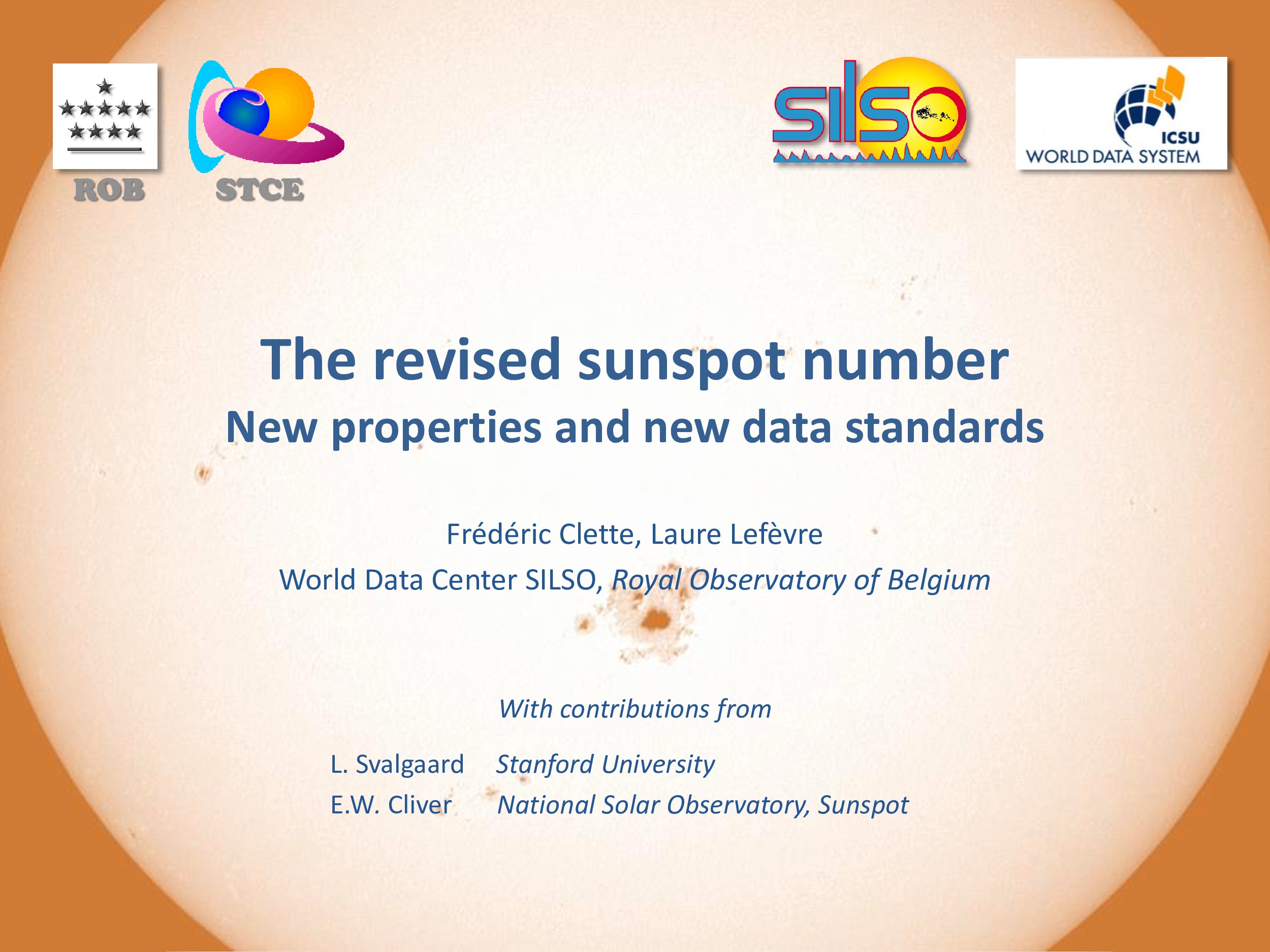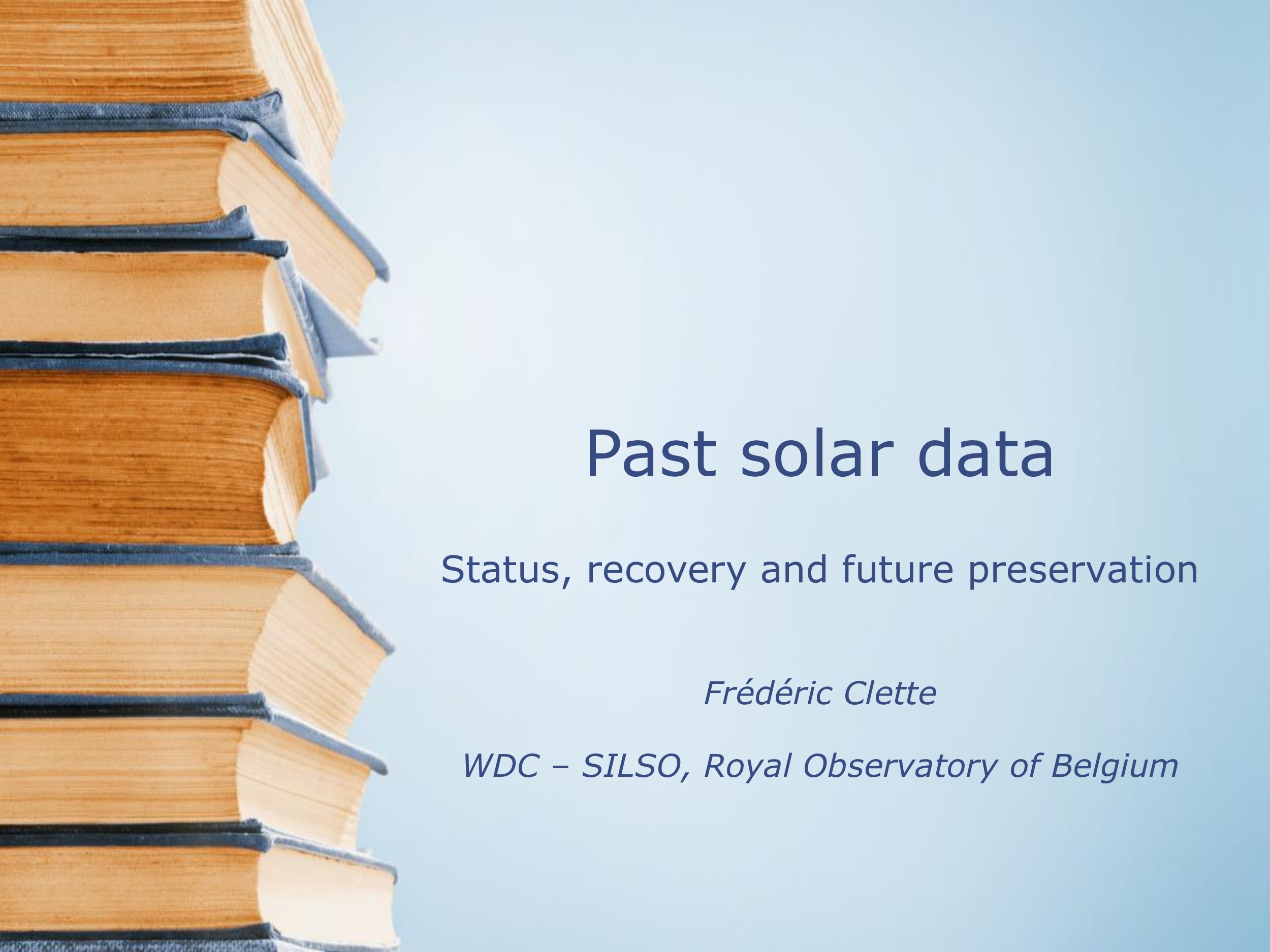Date of upload:
12.10.2015
Co-author:
Laure Lef\`evre, Edward W. Cliver, Leif Svalgaard
Abstract:
In 2015, a new entirely recalibrated version of the sunspot number and group number series has been released. Important changes, by up to 40\%, have been applied to the original historical series, leading to a new picture of the secular evolution of solar activity, without significant upward trend between the $17^{th}$ and the $20^{th}$ century.
We first describe the main changes and implications of this very first revision of the sunspot number series since its creation, more than 165 years ago. We also discuss the long-term non-linear relation between the sunspot number and the group number, as it is now free from artifacts. Both series are now largely reconciled, but do not fully overlap, clearly reflecting different properties of the solar cycle.
Together with this major step, several important changes were simultaneously adopted regarding past conventions. We will explain the various modifications and their motivations, in order to help users making the proper adaptations. In particular, A.Wolfer was chosen as the new reference, in place of R. Wolf, thus dropping the fixed 0.6 Z\"urich factor. For the group numbers, given the time variability of the average number of spots per group, we don't apply anymore a constant scaling factor to match the average scale of the sunspot number, in contrast with the previous series by Hoyt and Schatten (1998).
Finally, we present the new data sets and data formats adopted for this revised series and for the future production of the sunspot number. The new SILSO Web portal will provide access both to current and past versions of the series, allowing to keep track of future revisions and thus giving more flexibility to follow future progresses in sunspot science. Finally, we conclude on the redefinition of the base method used to routinely produce the sunspot number from all current and future observations of the SILSO worldwide network. New tools and statistical approaches derived directly from our global recalibration work will soon be ported to our operational software, improving the quality control and the long-term stability of the sunspot number series. This will complete the necessary modernization of our only direct long-term record of solar activity.


